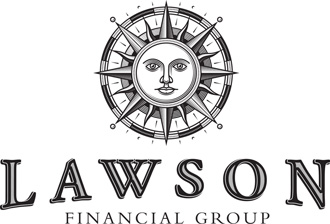
by Amy Lawson, MBA, CDFA®, RTT Practitioner®, C.Hyp
So far, we’ve talked about annuities, IULs, Roth IRAs, and Health Savings Accounts. Remember, annuities offer tax-deferred growth (and in some cases, tax-free growth) while IULs, Roth IRAs and Health Savings Accounts offer tax-fee growth, which parlays into tax-free money, and oh, how we like TAX-FREE!
This week we’re going to learn about mutual funds and exchange-traded funds, or ETFs. What are they? How are they similar? How are they different? What are the benefits? What are the banes? How are they bought and sold?
Think “Pizza”
Think of mutual funds and EFTs as a pizza; a pizza you make yourself. Not the frozen kind you pop in the oven after removing the plastic wrap and (hopefully) the cardboard bit. But, an honest-to-God-make-it-yourself pizza.
First, you choose your favorite crust: thick, thin, whole wheat, gluten-free, cauliflower. (Can you believe cauliflower masquerades as pizza crust these days?)
Next, you choose your favorite sauce: tomato, alfredo, or olive oil only.
After you press out your dough and spoon on your sauce, you are ready to add on your favorite toppings.
Let’s say that your favorite toppings are sliced Roma tomatoes, marinated mushrooms, chopped basil and fresh mozzarella. Let’s say you love equal parts Roma tomatoes and marinated mushrooms with only half as much chopped basil. Now, let’s say you LOVE lots of cheese on your pizza and that you want way more cheese than anything else.
So, here’s what you have:
20% Roma tomatoes
20% marinated mushrooms
10% chopped basil
50% fresh mozzarella
As you put your toppings on your pizza, you place them in such a manner that every single slice – from the skinniest to the fattest – has exactly the same percentages of your favorite toppings. The correct term is “homogenous,” but I call it “pizza perfection.”
With a mutual fund or an exchange traded fund, the crust is the fund company, such as Vanguard, Fidelity, American Funds, etc. The sauce is the type of holdings, such as US stocks, US bonds, foreign stocks, foreign bonds, US government bonds, or a combination.
Instead of delicious toppings, you have the stock or bonds of different companies. Whether you purchase a $100 “slice,” a $100,000 “slice” or a $100,000,000 “slice,” you are investing in the same companies proportionately. For example, if the fund you purchase is comprised of 10% Apple, 10% Google, and 10% Microsoft (with the remaining 70% made up of several companies you may or may not recognize), every “slice” you purchase will be comprised of 10% Apple, 10% Google, and 10% Microsoft and 70% of whatever the other companies are.
Mutual funds and exchanged traded funds are similar in that they are comprised of many companies and each “slice” has the same percentage of those companies.
How Are They Different?
Mutual fund and ETFs trade differently. Mutual funds trade at the end of the trading day. You may submit your buy or sell order at 10:00AM, but the order will not be executed until 4:00PM when the market closes. ETFs, on the other hand, may be traded intra-day, like a share of stock. If you submit your buy or sell order at 10:00AM, it will trade at that time, aka “at market,” should you indicate that on your order.
What Are The Benefits?
The biggest benefit of both mutual funds and ETFs is instant diversification. Because the average mutual fund is comprised of 100 holdings, should one holding decline in value, your entire investment will not go south. Both mutual funds and ETFs are liquid, which means they can be converted to cash rather quickly should you find yourself in need. Both mutual funds and ETFs allow for dividend reinvestment. This means that should any of the investments in the funds pay a dividend, those dividends can be automatically reinvested, which means you have more shares over time – common sense dictates that you want more shares over time.
Another way to acquire more shares over time is to set up a Systematic Investment Plan, or SIP. Systematic purchases allow you to purchase/invest a set dollar amount into a fund(s) each month, or quarter. Because the price of the underlying holdings of a mutual fund or ETF fluctuates over time, the purchase price of mutual fund and ETF shares will also fluctuate with each periodic purchase. Sometimes you will get more shares for your money than other times because sometimes the price will be lower than other times. But, over time, the average price of your shares will be lower. Just as it stands to reason that over time you want more shares than less shares, it also stands to reason that you want your share prices to be lower rather than higher because the lower the cost, the higher your return on investment. This strategy is known as Dollar-Cost-Averaging.
Most mutual funds have a minimum initial investment, but low, or no, subsequent purchase requirements. Trading costs do apply to your initial purchase, but you may set up an automatic purchase each pay period if you like, without the monthly trading costs.
Another benefit of both mutual funds and ETFs is that a professional chooses (and manages) the holdings in the fund – you don’t suddenly have to become a good stock picker or investment manager. That doesn’t mean all mutual funds are created equal, however. Some are good, some are bad, and some are ugly (really bad).
What Are The Banes Of Mutual Funds?
The not-so-pretty side of mutual funds includes high fees (remember I said some are bad and ugly); not all are tax efficient; and they trade only once per day – at the end of the trading day. So, if something huge happens that affects the market at 10:00AM (or anytime between the time the market opens and closes) and you are compelled to buy or sell, your order will not be executed until 4:00PM.
With regard to fees… Mutual funds have 4 types of fees: Front-end Loads, Back-end Loads, 12b-1s, Expense Ratios. Loads are commissions, plain and simple.
Front-end loads are commissions paid right up front; a typical stock mutual fund “load” is approximately 6%. You give the broker or fund company your hard-earned money, they take their 6% cut and invest the rest. Isn’t that crazy? Would you walk into the grocery store and pay BEFORE you shop? You are promised NOTHING when you turn over your money. You may find everything you want or nothing you need, but the grocery store gets its money. Would you stand for this at Kroger? Of course, not. But, every day, uninformed investors pay brokers big commissions for front-loaded mutual funds. Even at Kroger, you KNOW what groceries you are taking home before you pay for them.
Back-end loads, or deferred loads, are commissions you pay at the end of a set time period, typically 5 to 7 years. If you sell before the time period is up, then you pay the commission. The amount of commission you pay is typically on a sliding scale. For example, if you sell in Year 1, you pay 7% of the fund value… if you sell in Year 2, you pay 5% of the fund value… if you sell in Year 3, then you pay 4% of the fund value, etc.
Here’s the kicker: The broker who sells you a backend loaded fund doesn’t have to wait for his commission. Why? Because backend loaded funds are typically so “ugly,” investors don’t keep them very long allowing the brokerage house to comfortably pay the broker his commission.
12b-1 fees are referred to as “distribution fees” or “marketing fees” but, in reality, they are kickbacks paid to the brokers who sell them. They are used to incentivize the brokers to keep selling them. 12b-1 fees are only good for the broker; they are not good for you, the investor.
Expense Ratios reflect the cost to run the fund. It’s how the mutual fund companies pay their people; it’s how they keep the lights on. Expense ratios in and of themselves are not bad, but the lower the better. Typical expense ratios are between .02% and 1.0%, but rarely do they exceed 2.5%.
How will you know if a mutual fund pays a commission? It’s in the name. If there is an “A” at the end of a fund name, then you know it’s a mutual fund that pays a commission to the broker right up front. For example, Morgan Stanley Insight A, tells you it’s an A share. A Shares pay commissions upfront.
If the name ends in B, then it’s a B Share. B shares defer the commission until you sell, but remember, the broker still gets his money upfront.
Any letter after the fund name means there is some combination of loads and 12b-1 fees.
What Are The Banes of EFTs?
EFTs may not be cost effective if you are making systematic purchases over time because of the costs associated with trading ETFs. Unlike mutual funds, which typically have no trading costs associated with systematic purchases, ETFs don’t waive the trading costs. Also, from a timing perspective, selling an ETF in a highly volatile market may be more difficult, which is also true when selling stocks.
How Are They Bought And Sold?
Mutual funds and ETFs may be purchased and sold at the fund company level or through a brokerage house. For example, if you wish to purchase a Vanguard mutual fund or ETF, you may purchase it at Vanguard.com or you may purchase it through a brokerage house, such as TD Ameritrade.
Are you contemplating divorce and not sure what you have or what you are entitled to receive? We can help. Email us at hello@lawsonfinancialgroup.com.
Wishing you peace and plenty!
Your gray girlfriend,


